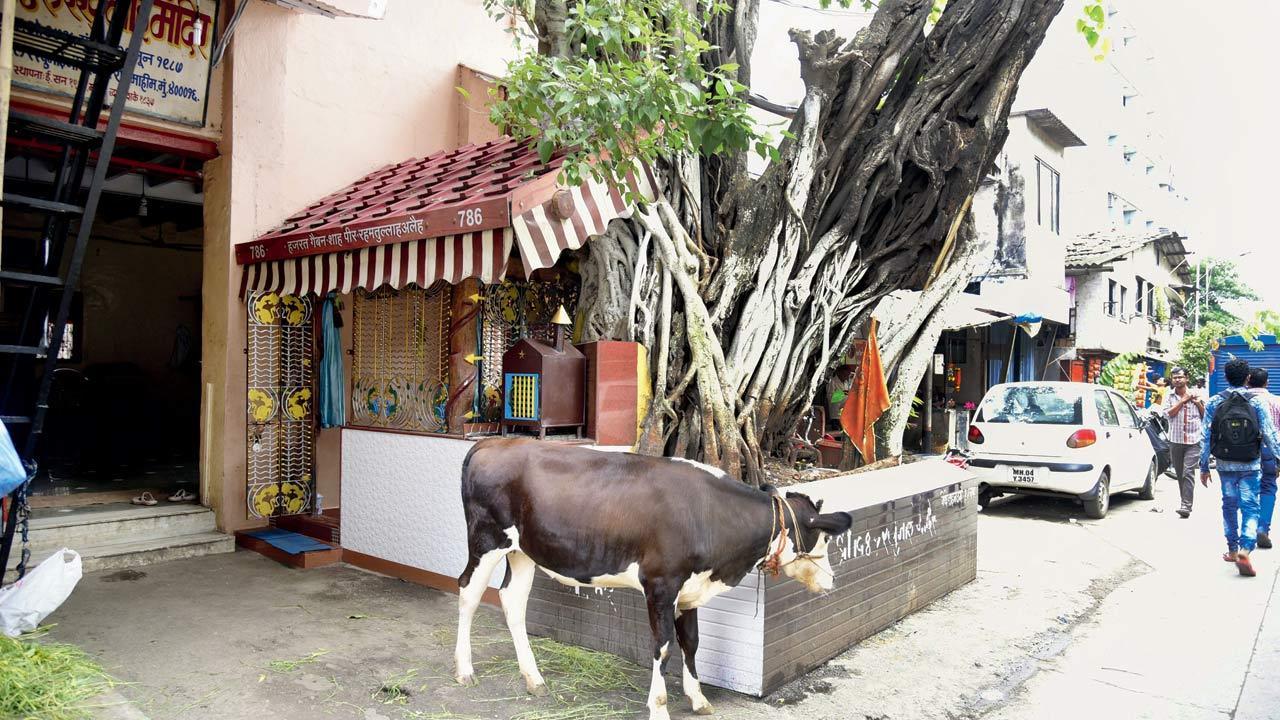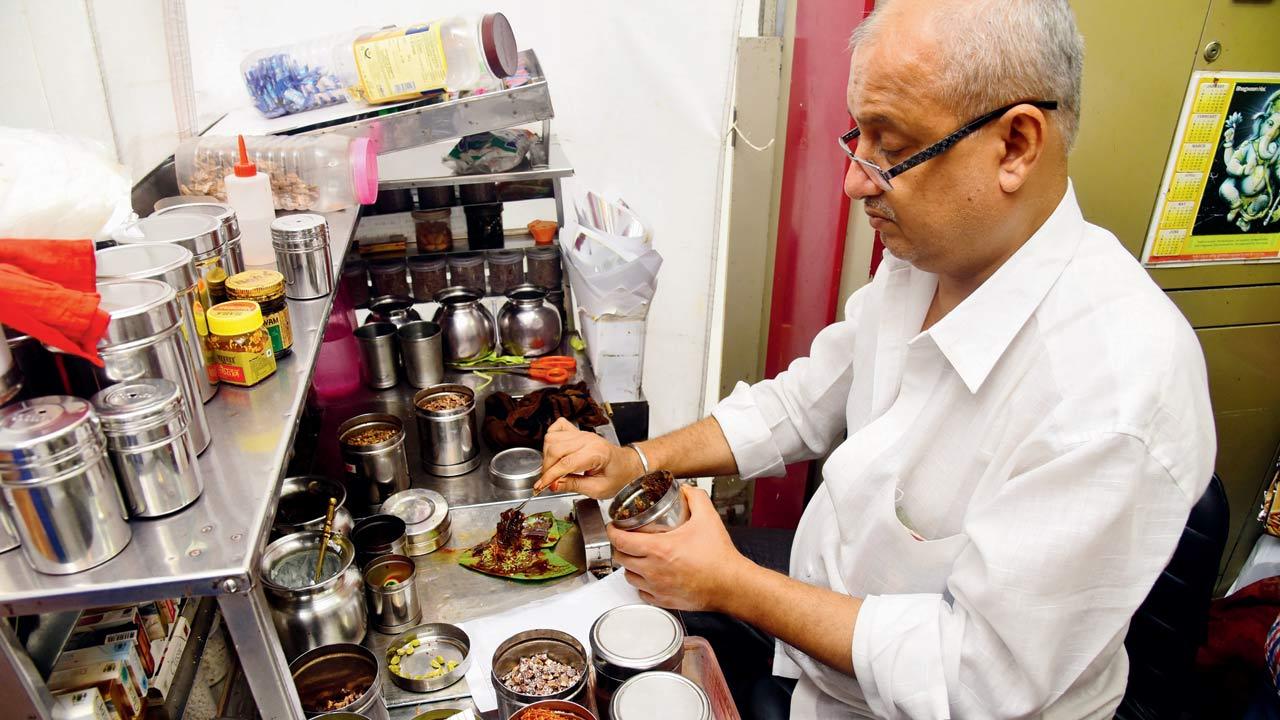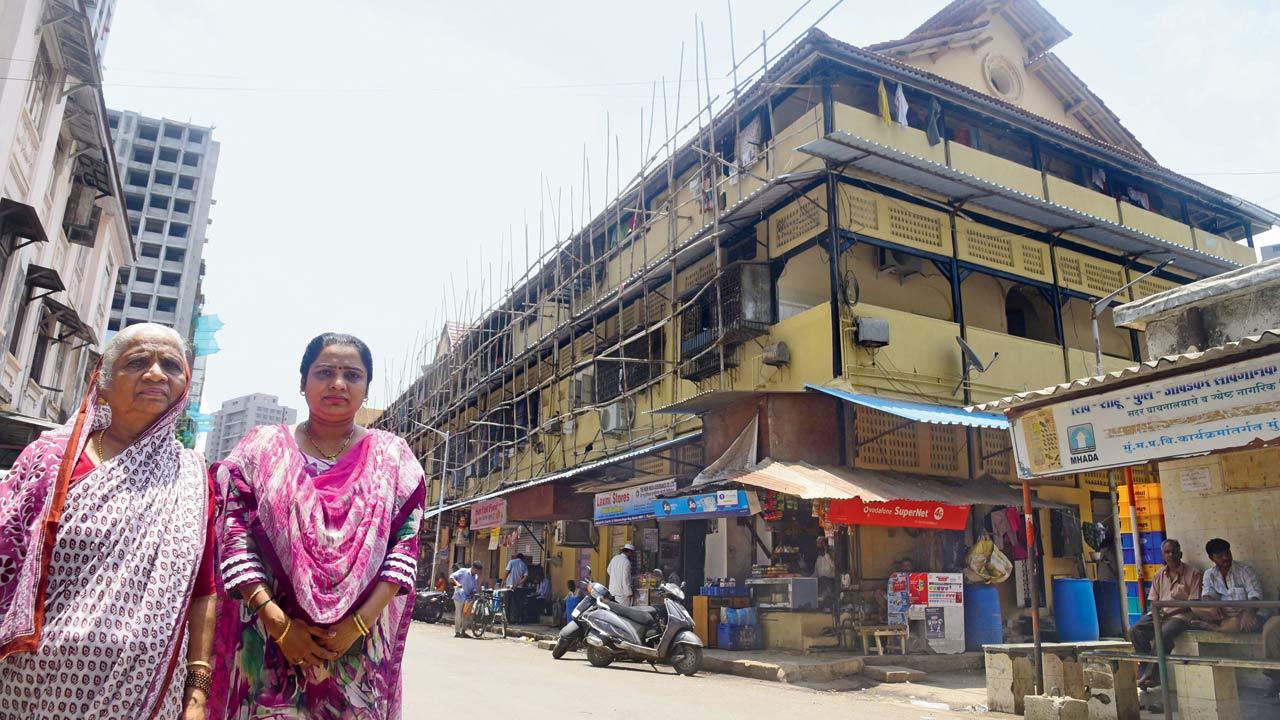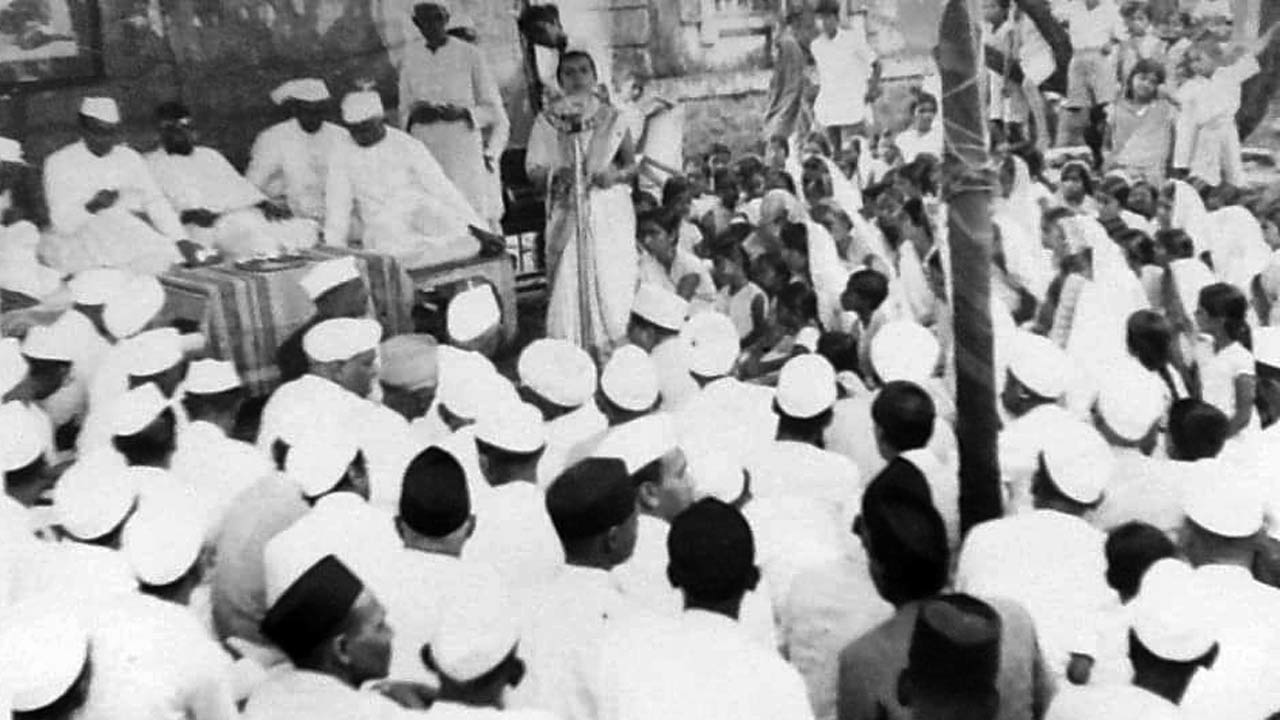When can sanity and humanity rise above communal hatred unleashed by partisan politics? Oftener than we dare to think

The Mahim shrines of Vitthal Mandir and Hazrat Gaitan Shah Peer Rehmatullah dargah have stood entwined for over 100 years
 How much do we really have to celebrate? On the eve of our 77th Independence Day anniversary, we are mired in times that appear to licence violence and vandalism. With reports of recent atrocities like the draconian Kanwar Yatra directives, hope seems hard to hold on to.
How much do we really have to celebrate? On the eve of our 77th Independence Day anniversary, we are mired in times that appear to licence violence and vandalism. With reports of recent atrocities like the draconian Kanwar Yatra directives, hope seems hard to hold on to.
ADVERTISEMENT
Yet, hope and faith are twin talismans which cradle the city gently through the worst tumult and carnage it witnesses down the decades. However gingerly, communal harmony can push out roots to soothe soil burnt by politically fanned fires.
Crisscrossing the city to prep for the content of these pages, we continue to be privy to heartening firsthand accounts. Of simple, ordinary people exemplifying a veritable ABC of grace under pressure: amity, bravery, camaraderie.

Ramesh Thadani of Om Cold & Sweet Pan shop, a believer in communal calm over ugly competition. File pics
Up in flames repeatedly with flashpoint hostilities, for all its tinderbox moments, Mahim–the marshy capital of Bombay’s seven islands–has seen as much tenderness as it has tension. A certain dense cosmopolitanism, particularly from St Michael’s Church to Victoria Church, lends this stretch of LJ Road definite beauty and character. Threading my way through its narrowest paths over weeks, I have watched devotees kneel at pews surrounded by the sound of the call to Azan prayers, even as Maharashtrian wedding revellers halt mid-dance respectfully for a Christian funeral procession.
Under Muslim rulers of Gujarat, at the tomb of Sufi saint Hazarat Makhdoom Ali Mahimi, the Qazi of Mahim, rose one of Bombay’s oldest mosques. It was constructed by Sultan Ahmed Shah in 1431, the year dating the Haji Ali dargah as well. A 10-day Urs festival has pilgrims flock to the shrine, where Mahim Police Station cops are the first to offer a chadar.
From her Canossa Convent years, Shobha Rao recalls the ambience around the school, where hawkers waited to tempt children with boras, sheng, chana chor and raw mango. “We hello-ed stylish church-going aunties, clicked studio pictures at the Urs mela and sang bhajans in Sitladevi Mandir for good exam results.”

Anasuya Dhone and her daughter Shubhangi Jadhav, at Agripada’s BIT chawl, relied on kind Memon shopkeepers in times of curfew
Little lanes here have hummed with unexpected tenderness amid trauma. Everywhere, as dreaded knocks on doors got louder, fearful minority families left their valuables with trusted Hindu and Christian neighbours. On a dark night, when LJ Cross Road 1 was a gully imposed with the strictest curfew after December 1992, Rao’s mother, Janaki Kanemar found unforgettable kindness. “Wearing her customary saree and big forehead bindi, which so obviously identified her, she ventured on the deserted road to bring our maid home,” says Rao. “A Muslim we barely knew escorted them protectively.”
In Makhdoomi Restaurant on Mori Road, I came across Chandrakant Meher finishing a late lunch one afternoon. This was where his Koli family trooped in for occasional treats of double maska-pao and khari biscuits. “The kingfisher-filled mangroves are gone and Mahim creek smells most foul,” he remarked. “We should at least look forward to fewer communal clashes in our area.”
Despite such fine diversity, LJ Road has too often suffered savage mob fury, especially in the city’s ignominious 1992-93 phase. Starting from its timber market, the blood of coldly hatched pogroms spilt on this stretch. But on the most demonic days, a sanguine history keeps safe the Vitthal temple, cheek by jowl beside the Hazrat Gaitan Shah Peer Rehmatullah dargah on Mori Road. In these days of digging and finagling to “prove” whether mandir or masjid ought to occupy a site, these small sister shrines rest clasped in serene embrace. Nestled contiguous in the shelter of an ancient banyan tree, they celebrated a joint centenary a few years ago. The same phoolwala strung flower torans to adorn both shrines. The same chaiwala supplied tea to worshippers bowing before each.
 Kokila Sampat opening the Quit India meeting at Gowalia Tank Maidan (now August Kranti Maidan) with a rendition of Vande Mataram in August 1942, when she was eight months pregnant. Pic Courtesy Sunil Sampat
Kokila Sampat opening the Quit India meeting at Gowalia Tank Maidan (now August Kranti Maidan) with a rendition of Vande Mataram in August 1942, when she was eight months pregnant. Pic Courtesy Sunil Sampat
Jerry Pinto’s poem highlights his home acre evocatively:
I live in a space called Mahim. Home to Ram, Ronnie, Rahim,
Sheetala Mata, Mother Mary and Guru Nanak.
With great bazars for
fish and paalak.
Parsi bawas make our pao
We live with no chiaow-miaow
For at the north end
stands St Michael
Guarding the gates of
our small miracle.
Moving toward the inner folds of the city, in the chaotic core of Agripada, I once reached the 112-year-old BIT (Bombay Improvement Trust) Chawl on Madhavrao Gangan Marg, to essentially figure whether it was indeed a British jail in an earlier avatar, as I had heard. Catching the eye of Anasuya Dhone from Building No. 3, I trailed her into a tiny home. “My husband kept store for a boss who was Parsi, like you, Limji Seth of Bombay Cycle and Motor Agency,” she smiled.
A glass of cool rose doodh, promptly pressed in my hands the moment I entered, shook the sweat off a scorching hot day. Anasuyabai’s daughter Shubhangi said, “The 1993 riots shattered our peace. With everything closed under curfew, we survived on bread and milk which our Memon shopkeepers supplied us.” Popping in from a next-door kholi to borrow flour, wizened old Vithabai piped in with her impressions of the bustee after waves of communal strife – “We remain united, though things are changing with matlabi political netas. They think we are poor and illiterate but we have eyes noticing what is what.”
A runaway success of an enterprise triumphing over the terrors of forced migration is presented by the example of an iconic Bombay eatery. Preceded by ancestors surviving Partition, JK Kapur emerged a film distributor in Bombay and the proprietor of Copper Chimney restaurant since 1972. His father, Amolak Ram Kapur, among the lawyers defending Bhagat Singh in the Lahore Conspiracy Case, fled their No. 4 Fane Road, Lahore, overnight in 1947. It was noble Pakistani neighbours, the Kasuris, who helped the Kapurs reach Delhi—ahead of Bombay—riding on top of one of the trains ferrying refugees from Lahore in the Punjab Province of British India to newly independent India. After securing them safe passage, the Kasuris actually also ensured the Kapurs’ belongings followed in trunks. Amolak Ram gratefully wrote to Mian Mahmud Ali Kasuri (quoted by Mian Mahmud Ali’s politician son Khurshid Mahmud Kasuri in his memoir, Neither a Hawk nor a Dove): “Aap ke liye dil se dua nikaltee hai.”
Further south, in Shop No. 91 of Nanik Niwas colony on Bhulabhai Desai Road, I interviewed Ramesh Thadani of Om Cold & Sweet Pan. Exiles from Sindh, his father Bhagwandas Prataprai Thadani and elder brother Sundarlal Prataprai came in 1947 to Ahmedabad. Stepping on Bombay shores a year later, they first settled at SS Nagar in Sion.
“Bahut hee bhaari waqt tha woh, we underwent the toughest times. Neighbours of many communities helped as much as they possibly could for us to get back on our feet a bit,” explained Ramesh, born in Nanik Niwas, where the Thadanis set up their stall opposite Tata Garden. Soon enough, besides pleasing local palates, they were as adroitly packing permutations and combinations of every conceivable pan delight in foil for overseas fans.
Savouring the most marvellous mix of flavours from a chilled “pan ball” burst in my mouth, I heard Ramesh say, “This shop is my temple. Loyal Muslim customers greet me with a ‘Hari Om’ with ease, without a second thought. What’s the issue?”
Jazz impresario Sunil Sampat believes India is “inherently a secular, all-encompassing, tolerant place. Ours is a land welcoming ‘foreigners’ of every colour and religion. There is no greater proof needed of this attitude than a glimpse at our history. We never allowed differences to act as barriers to the acceptance of travellers and even invaders. As a people, we were motivated by the basic shared focus on a common cause.”
It was in this climate that his remarkable mother Kokila grew up. She was the daughter of a devout follower of Mahatma Gandhi, who sacrificed a lucrative family textiles business to serve the freedom struggle. Touring Europe in 1935 with her parents when she was 11, she observed Hitler at a Nazi rally in Berlin. She later told her son how she had seen the most evil and the most peaceful men on earth. Always fiercely independent, her song of inspiration was Tagore’s Ekla cholo re (Walk on alone).
Kokila Sampat opened the legendary Quit India meeting on August 9, 1942, defiantly singing Vande Mataram. It was a courageous act of patriotism—18 years old, she was eight months pregnant with her baby son.
Handing me a photograph of that epic moment, Sampat adds, “Naturally, being born in 1942, I was raised with cherished values my mother imbibed in her lifetime. In Nagpur, where my family moved, I attended the Bishop Cotton School run by Christian missionaries. My best friend and fellow cricketer there was a boy called Miya Khan. It wasn’t until I was 12 that a visitor to our home told me he was Muslim. I did not see the point of that remark and, happy to say, don’t see it today. We were forged into one wholesome people in the cauldron of colonial rule. And are still a considerable force as Indians, but neo colonial powers are trying the very trick as the Brits.”
Author-publisher Meher Marfatia writes fortnightly on everything that makes her love Mumbai and adore Bombay. You can reach her at meher.marfatia@mid-day.com/www.meher marfatia.com
 Subscribe today by clicking the link and stay updated with the latest news!" Click here!
Subscribe today by clicking the link and stay updated with the latest news!" Click here!












